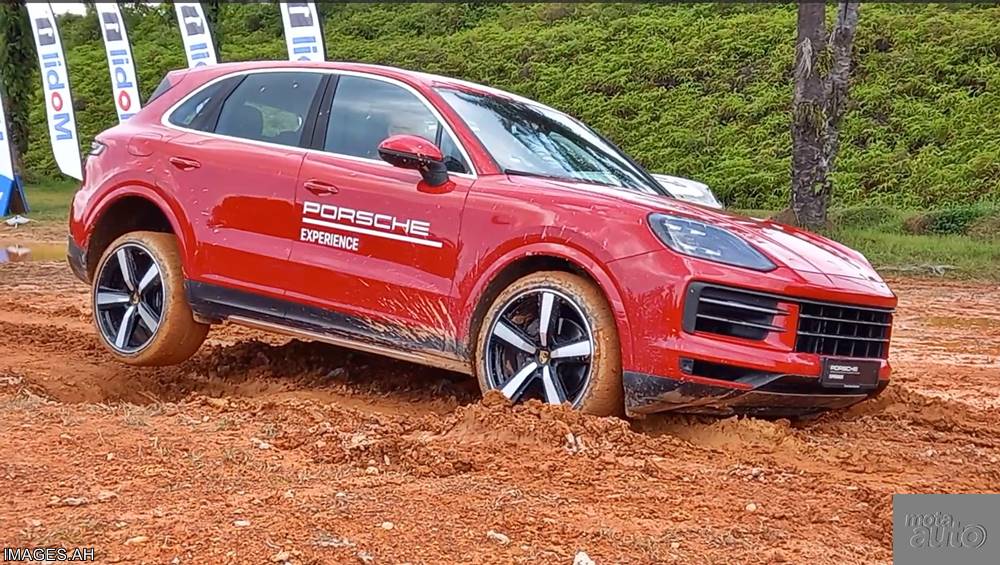The Porsche World Roadshow (PWRS) – also referred to as the Porsche Experience – is an annual event which the sportscar company has been running for over 20 years. Primarily a marketing exercise, it aims to enhance brand awareness – though the brand is certainly very well known already. It also gives distributors around the world a chance to showcase the latest models and more importantly, allow potential customers to try them.
Porsche obviously realizes that its business partners cannot have a lot of demo vehicles for customers to test and are unlikely to have the rarer models at all. But being a sportscar company, it understands that the experience behind the wheel is what has inspired generations of drivers since the company began in 1948. So the company has the PWRS where it takes the latest models around the world.

As part of the event and to show off the superlative attributes of the cars, the PWRS includes brief advanced driving courses for attendees. Professional instructors (some of whom are racing drivers) who work with Porsche at its various driving facilities in Europe provide the training.
Until the Cayenne came along, the demonstrations and exercises were confined to racetracks and hard surfaces, allowing participants to see just how well the cars handle and grip the road. With the SUV, Porsche added an off-road element in the training, taking the vehicles onto rough and muddy terrain to show its superior all-wheel drive capabilities. And just to prove that it is still a sportscar, it is also driven around the racetrack as quickly as a Boxster at high speeds.

The PWRS has been coming to Malaysia since 2001 (though not annually), with the inaugural event held at the old Asia-Pacific Auction Centre next to the Subang airport. The site was not really suited for such an event, being a large carpark, and for high-speed drives, a ‘country experience’ was provided where police escorts took participants on a long drive on the highway.
The next time the PWRS came to Malaysia in 2003, it was held at the Sepang International Circuit (SIC) which is an ideal place. As a world-class circuit certified for Formula 1 races, it offers safe conditions for participants to explore the very high limits of Porsches and experience simulated emergency conditions. Outside the circuit, there’s a lot of rough ground which is ideal for off-road driving.

Porsche obviously likes SIC and uses it not only for the PWRS but also for other activities where it brings in people from other countries in the region. There are also circuits in Thailand and Indonesia but it seems to favour SIC. In future, it will also have its own customer experience facility near Changi airport in Singapore.
The PWRS is back again this week and the wide array of models includes the 911 Targa 4 GTS, 911 Turbo S, 911 GT3 RS, 718 Cayman GT4 RS, Spyder RS, Cayenne Turbo E-Hybrid, Macan GTS, new Panamera, new Taycan Turbo and Taycan Turbo S Cross Turismo – all of which are offered for drives. In total, there are some 40 cars of 23 model types, and the number of attendees is around 500, some from other countries and also from the media.



This year, besides the upgraded Taycan, there was also a sneak preview of the Macan Electric which had its global debut in Singapore in January. The all-new fully electric SUV is not actually on sale yet though orders are accepted now.
First deliveries are expected to commence at the end of the year or early in 2025. Sime Darby Auto Performance is trying to ensure they can get plenty of units allocated for Malaysia as it can be sold duty-free till the end of 2025.

The PWRS generally follows the same format designed to allow participants to experience the handling, braking and sheer acceleration of each car. In particular, active systems like the Porsche Stability Management can be experienced in the extreme conditions created, allowing the driver to see how the car is kept stable even in slippery conditions.


The off-road driving is done on a course outside the track which is purpose-built beforehand. The Cayenne is usually used, and participants get to see how its high ground clearance is very useful on uneven terrain and crossing deep water. Some years, it has been dry and dusty but this year, it has rained a lot so the trench filled with water has been too deep on some days and that exercise can’t be done.

The off-road course, in contrast to the high-speed driving on the track, is done slowly and shows off how the intelligent all-wheel drive system works. When one wheel cannot grip and spins, power is transferred to the other wheels to keep the vehicle moving forward.
The drives on the highway no longer take place, probably because there would be a negative perception by other motorists seeing the cars speeding and clearly over the speed limits. They were allowed to do so by the police escorts in earlier years but this has been stopped to avoid those negative perceptions.


Nevertheless, the experience of high speeds, especially in corners, can still be experienced and in greater safety as the participants can go around the circuit which Formula 1 drivers have raced on. The skilled instructors can show them just how fast the cars can go through corners and many would have heart-stopping moments feeling the extreme forces.

The PWRS, which is an all-day event, ends with a closing session that sees participants getting certificates and also prizes for doing well in some of the exercises (they are not usually told that they are being timed). Everyone will bring home memories and some will be so impressed with their experience that they will start talking about ordering one.

